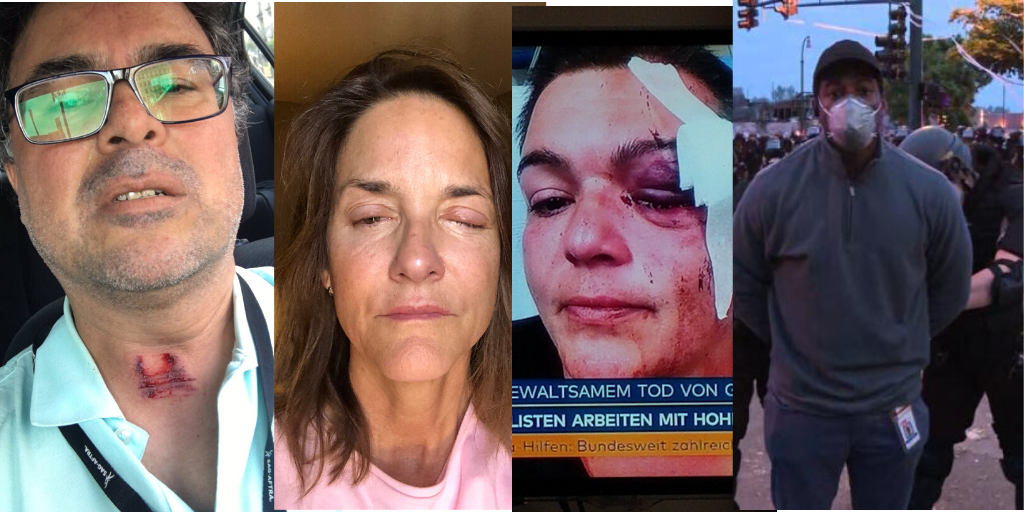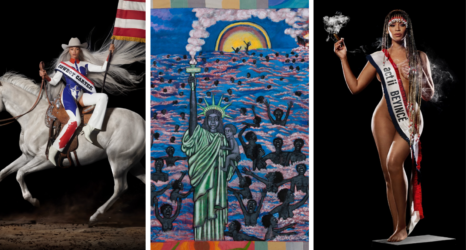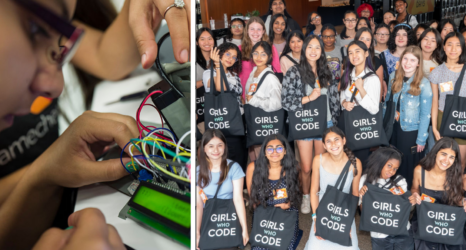
Journalists are facing dangerous backlash as protests rage on in major U.S. cities.
Peaceful—and sometimes-violent—protests demanding justice for the murder of George Floyd and others like him, have been prominent day and night for the past eight days. These tens of thousands of protesters have gathered to denounce institutionally ingrained racism—both in U.S. law enforcement and in the American justice system.
Of course, these protests occur amidst a global pandemic that has further exposed systemic inequality and racism—since in the U.S., Black communities, among other marginalized groups, have been disproportionately affected by coronavirus and continue to face extreme discrimination in the health care system.
Due to the volatile nature of some protests, members of the National Guard have been sent to at least 23 states, and 40 U.S. cities have instituted city-wide curfews.
In response to protesters, police officers have employed tear gas, rubber bullets, pepper spray and physical force—several times on crowds engaging in peaceful rebellion.
As journalists attempt to bring eye-witness news to the public, they face challenges and direct threats to their own safety. Journalists have been arrested and attacked by police officers while trying to cover stories about protests. To date, over a dozen journalists—and counting—have been injured by dangerous police control tactics, such as pepper spray and rubber bullets.
Most reporters stand among protesters, and some have been injured as they’ve become entangled in law enforcement attempts to dismantle large crowds—meaning journalists were not directly attacked. However, more than a dozen reporters have testified to injury, harassment and arrest at the hands of law enforcement—even after confirming their credentials as members of the news media.
CNN reporter Omar Jimenez was arrested on air while covering protests in Minneapolis. At the time, no charges had been filed against Derek Chauvin, one of the arresting officers in the Floyd case. Many observed the irony that a CNN reporter was arrested before the officer in question. Police claimed they did not know Jimenez was a reporter, which was evidently false.
Carolyn Cole, a reporter for the LA Times, tweeted a disturbing image after her experience being attacked by the Minnesota State Police while reporting in Minneapolis.
A police officer shot radio reporter Adolfo Guzman-Lopez in the throat with a rubber bullet just after he had finished an interview in Long Beach, California.
Michael Anthony Adams, a correspondent at Vice News, announced his credentials to Minneapolis officers over and over again, yet was still pepper sprayed. Vice journalist Roberto Daza documented the incident.
Similarly, MSNBC’s Ali Velshi was attacked by Minneapolis police officers wielding tear gas—even after he shouted his status as a journalist.
Above are just four instances of many. Intentionally directed violence against journalists is a clear violation of constitutionally guaranteed protections that inform exchanges between law enforcement and news media.
Violence against news media endangers accountability of both American people and systems. When the public is uninformed, the very foundation of democracy is threatened.
Instead of offering support for the fourth estate of journalism, the president tweeted his mistrust in “Lamestream media.”
Trump’s continued rhetoric surrounding “fake news” greatly informs the public, including law enforcement.
Ms. and many others around the world stand with journalists on the frontlines working tirelessly to provide reputable news.





